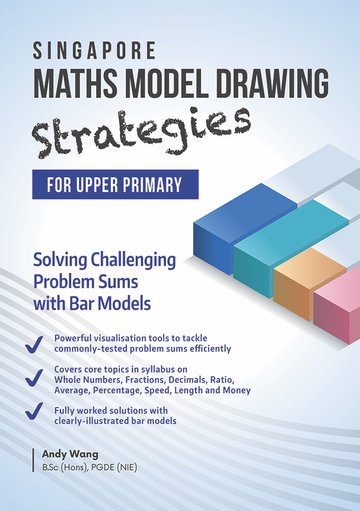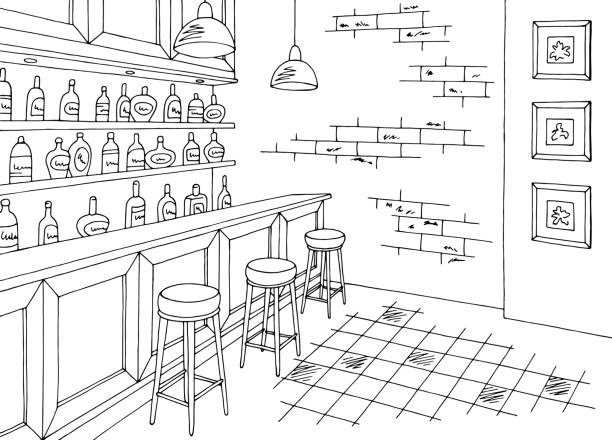A simple guide to understanding math better through bar model drawing techniques
Exploring Bar Design Illustration Techniques: A Comprehensive Overview to Envisioning Mathematics Concepts
Bar design attracting techniques work as a valuable resource for both instructors and pupils in picturing mathematical concepts. These versions streamline complex numerical relationships, assisting in the comprehension of addition, multiplication, subtraction, and division. This guide describes reliable methods for executing bar designs, promoting energetic involvement and real-world links. As viewers check out the useful applications and teaching tips, they will certainly uncover just how these methods can change their technique to maths.
Recognizing the Basics of Bar Version Illustration
Bar design drawing works as an effective visual device in mathematics, promoting the understanding of analytical techniques and mathematical partnerships. This technique involves standing for numbers and their connections with rectangle-shaped bars, making it easier to visualize procedures such as addition, reduction, multiplication, and department. Each bar's length corresponds to a details worth, permitting students to contrast amounts and understand percentages clearly.
To produce a bar version, one begins by recognizing the problem's crucial elements, commonly breaking it down right into parts that can be aesthetically stood for. For circumstances, in a basic enhancement trouble, two bars can be drawn, with their sizes standing for the addends. The combined length illustrates the sum. On top of that, bar models can be adjusted for extra complex troubles, including ratios and portions, by changing the bars as necessary. Grasping these fundamentals lays a solid structure for effective analytic and deeper mathematical comprehension.
Advantages of Using Bar Versions in Math
Making use of bar models in mathematics provides countless benefits that boost understanding and comprehension. These graphes help students in grasping intricate concepts by breaking them down right into convenient components. Bar versions provide a clear structure for showing connections between numbers, making abstract concepts much more concrete. They advertise a deeper understanding of mathematical procedures and help with analytic by enabling students to envision the information they are functioning with.
In addition, bar models support the development of important assuming abilities, as pupils need to evaluate and interpret the aesthetic details to reason. This approach encourages active engagement with the material, enhancing retention and proficiency of mathematical concepts. By cultivating a strong structure in aesthetic literacy, bar versions equip students to approach various mathematical difficulties with self-confidence. On the whole, the integration of bar versions right into mathematics education shows advantageous in cultivating both comprehension and analytical abilities among students.
Using Bar Models to Enhancement and Subtraction
Bar versions serve as an efficient device for visually standing for enhancement and subtraction troubles. By illustrating the relationship between numbers, they improve understanding and facilitate analytic. In enhancement, real-life applications of these versions can help students grasp mathematical ideas in sensible contexts.
Standing For Addition Visually
When students encounter enhancement and subtraction issues, aesthetic aids can considerably boost their understanding of these procedures. Bar models act as reliable tools for standing for addition. By separating a rectangle right into sectors that represent the numbers involved, trainees can envision the relationship between the quantities. For example, if a pupil needs to add 3 and 5, they can create a bar split into 2 sections: one section representing 3 and the various other standing for 5. This clear representation not just streamlines the enhancement process but additionally reinforces the concept of combining quantities. As pupils adjust these visual help, they develop a much deeper understanding of addition, causing improved analytical abilities and higher confidence in their mathematical capacities.
Reduction With Bar Designs
Although reduction is frequently viewed as a much more complicated procedure than enhancement, bar versions can successfully clarify this procedure for pupils. By aesthetically representing the quantities included, pupils can better comprehend how numbers relate to each other. In a bar design for reduction, one bar stands for the total, while an additional suggests the quantity being deducted. This aesthetic distinction helps pupils realize the principle of "eliminating." If a bar reveals 10 devices, and another bar standing for 4 units is gotten rid of, students can easily see that 6 devices stay. This technique not only fosters understanding of subtraction but likewise help in creating problem-solving skills, permitting trainees to envision their mathematical reasoning and enhance their general understanding of mathematical ideas.
Real-Life Application Examples
Comprehending reduction through bar designs lays a foundation for using these methods in real-life circumstances. In different contexts, such as budgeting or buying, people can imagine how much cash remains after costs. If a person has $50 and invests $20, a bar version can stand for the overall amount and the spent part, illustrating that $30 is left. Furthermore, moms and dads can use bar versions to assist youngsters recognize the number of more things require to be included to complete a collection, such as having three apples and needing five. This graph simplifies intricate issues, promoting understanding and retention. Eventually, bar models function as effective tools in everyday decision-making, improving mathematical understanding in practical situations.
Visualizing Reproduction and Division With Bar Designs
In checking out the application of bar designs for multiplication and department, it is important to grasp their foundational ideas. Constructing multiplication versions allows learners to visualize relationships between numbers, while effective department strategies can be highlighted through these aesthetic aids. This approach enhances understanding and problem-solving skills in maths.
Recognizing Bar Designs
Bar models serve as an effective aesthetic tool for showing the ideas of multiplication and department. They allow learners to represent mathematical relationships in an organized format, promoting a deeper understanding of these operations. In reproduction, bar versions display groups of equal size, permitting individuals to picture the overall quantity when integrating these teams. Conversely, in division, bar versions aid depict how a total is divided right into smaller, equivalent components, clearing up the idea of dividing. By utilizing these visual help, pupils can comprehend the underlying concepts of reproduction and department better. This technique not just boosts understanding however likewise sustains analytical abilities, making bar versions an important property in mathematical education.
Building Reproduction Designs
Creating multiplication designs making use of bar layouts uses a clear technique for picturing the procedure of multiplication. These versions allow students to stand for reproduction as groups of equal components, making abstract concepts more concrete. To highlight (3 times 4), a pupil can draw one bar divided right into three equal sectors, each representing four units. In addition, producing a 2nd bar with the very same length reinforces the understanding of duplicated enhancement, as try this site each segment represents one group. This graph not only aids in realizing multiplication but also improves analytical abilities. By employing bar designs, trainees can better comprehend partnerships in between numbers and establish a durable foundation for more complex mathematical ideas, causing boosted self-confidence in their capacities.
Envisioning Department Approaches

Solving Word Troubles Making Use Of Bar Version Techniques

In a trouble entailing enhancement and subtraction, students can attract separate bars for each quantity and then manipulate them to discover the remedy. This procedure not just clears up the issue yet likewise fosters a deeper theoretical understanding. Bar versions can be adjusted for various kinds of word issues, making them versatile throughout various mathematical subjects. Ultimately, utilizing bar designs can substantially boost pupils' problem-solving skills by giving a clear aesthetic path to reach the right response.
Integrating Bar Versions in Different Mathematics Topics
Bar designs can be seamlessly incorporated right into numerous mathematics subjects, enhancing students' understanding of concepts beyond standard math. In algebra, these aesthetic devices help in representing inequalities and formulas, allowing learners to envision relationships between variables. When tackling geometry, bar designs can highlight More hints the homes of shapes and spatial thinking, assisting trainees realize principles like area and perimeter properly. In data, bar versions assist in the interpretation of information collections, allowing trainees to compare quantities and recognize trends visually. Additionally, integrating bar versions within dimension subjects help in comprehending units and conversions by offering a concrete representation of amounts. By utilizing bar models throughout various mathematical areas, instructors can cultivate a much deeper comprehension of complicated concepts, thus enhancing analytical skills and advertising essential thinking (bar model drawing techniques). This adaptability demonstrates the utility of bar designs as a fundamental tool for pupils in their mathematical journey
Tips for Teaching Bar Models Properly
Integrating bar models right into training practices calls for thoughtful techniques to maximize their effectiveness. Educators ought to begin by introducing bar models with easy, relatable instances that pupils can quickly understand. This assists to develop self-confidence and knowledge with the concept. Slowly enhancing the complexity of troubles enables students to use their abilities gradually. Furthermore, educators must encourage pupils to create their own bar versions, advertising energetic engagement and possession of their learning.
Incorporating collaborative tasks can also enhance understanding, as trainees discuss and resolve problems in teams. Continuous feedback is essential; teachers ought to provide constructive discourse on students' bar version depictions to guide enhancement. Connecting bar designs to real-life scenarios reinforces their significance, helping trainees see the practical applications of their mathematical abilities. By implementing these methods, educators can efficiently harness the power of bar models in their mathematics direction.
Frequently Asked Inquiries
Can Disallow Models Be Utilized in Various Other Topics Besides Mathematics?
Bar models can undoubtedly be made use of in different subjects past mathematics. They properly highlight ideas in science, social studies, and language arts, helping to aesthetically represent partnerships, processes, and ideas for improved understanding across self-controls.
What Age Team Is Best Suited for Discovering Bar Versions?
Bar designs are best matched for children ages 7 to a knockout post 12, as they establish concrete thinking abilities throughout this period (bar model drawing techniques). At this age, pupils can successfully understand abstract principles with visual depiction and analytic techniques
Exist Digital Tools for Creating Bar Models?

How Can I Analyze Student Recognizing of Bar Designs?
Examining trainee understanding of bar designs can include tests, observational evaluations, and seminar. Teachers might likewise evaluate trainees' finished versions and their capability to explain their thinking, making certain a comprehensive assessment of understanding.
What Prevail Blunders When Making Use Of Bar Models?
Usual blunders when using bar designs consist of misstating quantities, stopping working to accurately identify bars, perplexing addition and subtraction, neglecting to make use of consistent scales, and neglecting the significance of clear aesthetic separation in between different aspects.
In addition, bar versions can be adjusted for extra complicated problems, consisting of fractions and ratios, by readjusting the bars appropriately. Subtraction is typically viewed as a much more complex operation than enhancement, bar models can efficiently clarify this process for students. In a bar design for subtraction, one bar stands for the total, while an additional indicates the amount being deducted. If a bar shows 10 systems, and an additional bar standing for 4 devices is gotten rid of, students can easily see that 6 devices remain. When separating an overall right into equivalent groups, pupils can draw a long bar to stand for the entire and then section it right into smaller bars that show each group.